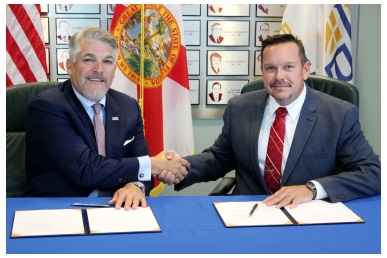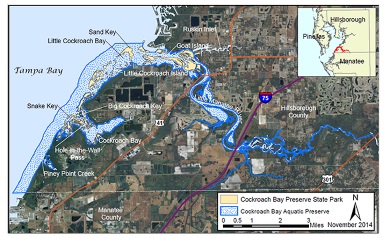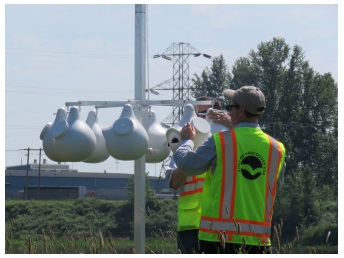
Port Tampa Bay President & CEO Paul Anderson signs long-term lease agreement today with Keith Laakkonen, director, Rookery Bay National Estuarine Research Reserve, with Florida DEP.
Photo/Port Tampa Bay
Port Tampa Bay Signs Long-Term Lease for Management of Cockroach Bay Aquatic Preserve

Port Tampa Bay President & CEO Paul Anderson signs long-term lease agreement today with Keith Laakkonen, director, Rookery Bay National Estuarine Research Reserve, with Florida DEP.
Photo/Port Tampa Bay
Port Tampa Bay joined the State of Florida on June 21 in a new long-term lease that gives the Florida Department of Environmental Protection (DEP) renewed oversight of the Cockroach Bay Aquatic Preserve in southern Hillsborough County.
The signing renews an agreement that was executed by the State of Florida and the port authority in July 1976 and expires at the end of this month. The new 40-year lease agreement continues the partnership with DEP in managing this environmental asset and carries with it a 40-year lease extension option.
Pursuant to its enabling act, the port authority owns the sovereign submerged lands in Hillsborough County, which includes the 4,800-acre Cockroach Bay area.
Cockroach Bay Aquatic Preserve provides critical habitat for fish, oysters and many endangered birds while offering numerous recreational opportunities such as paddling and fishing.
The port is also in environmental projects that improve water quality, protect seasonal nesting shore birds, and manage environmental lands within the port district.
"Port Tampa Bay, in its long-standing relationship with DEP, is excited to enter into this long-term agreement that essentially guarantees a high quality of ecological sustainability for one of the region’s most beautiful and unique preserves. We appreciate the opportunity to continue our partnership with the department and to engage in projects that will deliver positive generational environmental impacts to the region," said Port President Paul Anderson.

Source: Port Tampa Bay
